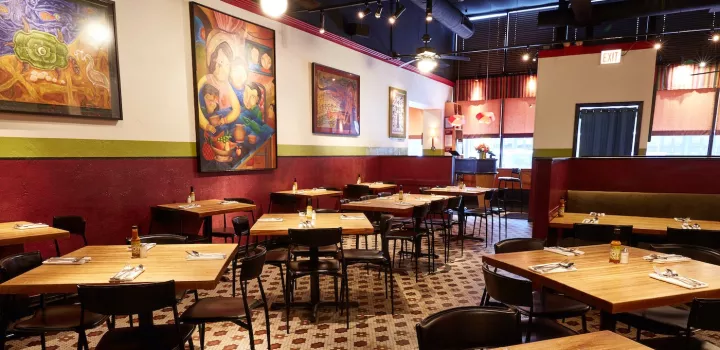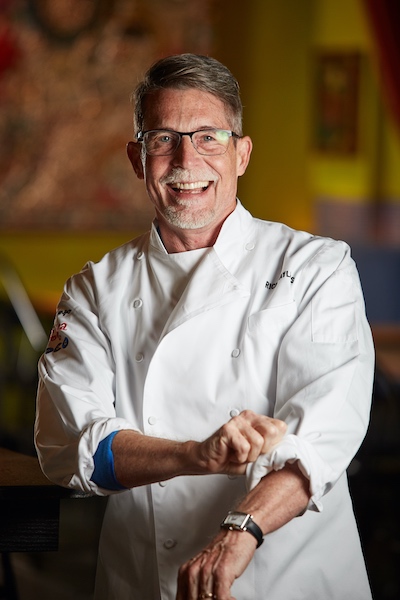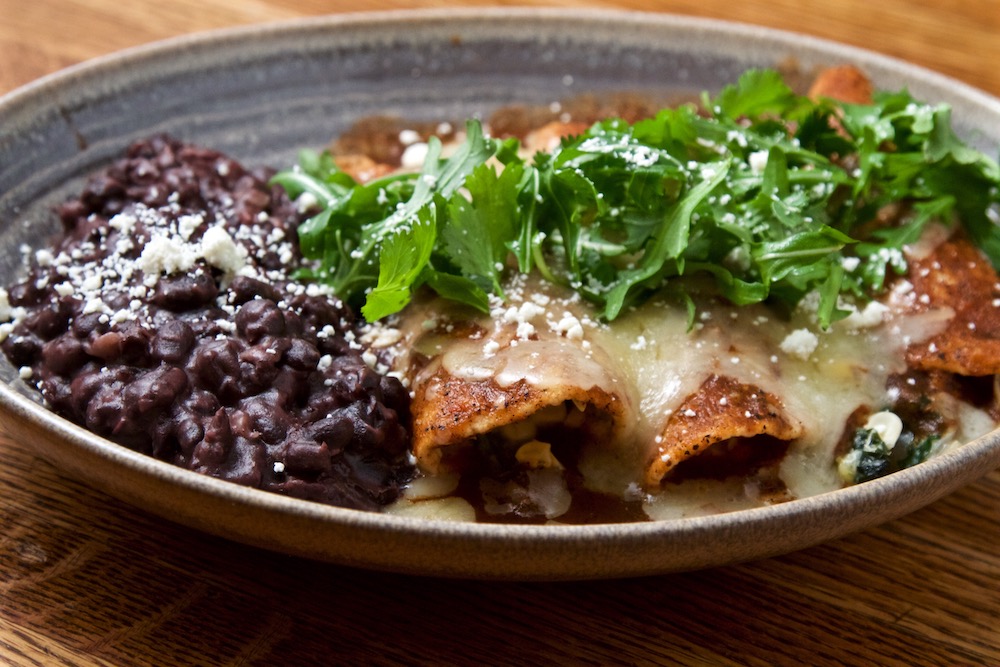
Culinary Career Advice from Rick Bayless
Insights from the Chicago chef and restaurateur's virtual appearance at ICE.
The James Beard Foundation named him Humanitarian of the Year in 2007. He won the first season of “Top Chef Masters” in 2012. Eater called him the most interesting man in the world in 2014, and Bon Appetit called him the unofficial mayor of Chicago in 2015.
Chef Rick grew up with an appreciation for regional specialties because his father specialized in Oklahoma barbecue, and he developed expertise in regional Mexican cuisines after relocating to the country for five years to write a cookbook on the topic. He opened Frontera Grill based on that cookbook in 1987 and has expanded to four restaurants on Clark Street throughout 30 years of acclaim, awards and food media appearances, including seven James Beard Awards, nine cookbooks and four Emmy nominations for his PBS series “Mexico – One Plate at a Time,” which is in its 12th season.
Here are Rick Bayless’ top tips for aspiring culinary professionals from more than three decades of success.

Keep an Open Mind
My motivation for writing a cookbook on regional Mexican cooking was to help show people that the kind of food we call Mexican in the U.S. isn’t really Mexican food, it’s Mexican-American food. And the food that they eat in Mexico, I wanted to show people was more diverse and really, really wonderful. But the only way I could do that was to support myself by being a consultant in a chain of Mexican-American restaurants that had 27 ingredients in the kitchen and I couldn’t add anything else, and I had to make everything from wet burritos to crispy, fried shell tacos, but I did it because they paid me enough to do the other project that I wanted to do. The thing that I learned in all that because I kept an open mind – it was a little hard from time to time – but it taught me a whole lot about how to run a really good restaurant. They had all the systems down.
Build a Solid Foundation
I worked super hard on that opening menu of Frontera to make sure that it: No. 1 reflected Mexico really well. No. 2 would be dishes that our clientele here, which wasn’t mostly Mexican at the beginning, that they would resonate with in some way, and not be put off by, and were absolutely rock solid in their preparations. After 30 years we still have eight dishes on the menu from that original menu. That’s a huge recommendation on my part: Your opening menu should not be a work in progress. It should be absolutely stuff that you think could be bedrock for you then to grow from and add more stuff to. Get something rock solid to start with because that’s what everyone’s going to know you as. I think that’s been part of our success that I built a good, solid foundation. Then the second thing that’s really important is to constantly change your menu. For us it was really important to build this constant changing thing so that we could stay engaged.
Learn the Technique. Respect the Tradition.
When you make a real cochinita pibil, and you do it just like they do in Mexico. It’s a real small pig that’s marinated in achiote and then wrapped in banana leaves and cooked slowly traditionally in a wood-fired pit but in most people’s homes it will go in the oven. And then you make all of their accompaniments to go with it exactly right, which most people will tell you that you have to tone it down for the American palate, and then to me you’ve compromised the dish in a way that is not representative of Mexico, and it’s not that good. You have to have all the parts. You have to have the right pickled onions and the right habanero sauce, which can make certain people cry – it made me cry the first time I had it, too. It’s hot but it’s so incredibly flavorful, and if you make it in the traditional way, which is three ingredients treated right, then you’re going to have the most amazing dish. But if you don’t learn the technique and respect the tradition, it’s not going to be a great dish. We do it all right. We get the pigs from a local farmer, all of that.
Build a foundation with a Restaurant & Culinary Management diploma.
Introduce Something Unknown
I have such clarity that I want to represent Mexico really well so if we have a fine dining concept and we have a mid-place concept then I say, what would quick-service be like? And that’s when we opened Xoco. Anything that is inspiring to me in Mexico, I’m inspired to bring back to the U.S. That’s why we spun off from our Xoco place, which really focuses on tortas and caldos, the meal-in-a-bowl soups, and fresh churros. We made a little version of that to do at the airport because we thought it would work out there, and it did so incredibly well. The most successful concept that the airport has ever seen. Who knew that you could do something with Mexican sandwiches? Everybody knows sandwiches, but nobody knows Mexican sandwiches, and they’re not even called sandwiches, they’re called tortas. We decided to do that because everyone and their dog is doing a taqueria now, so I wanted to bring something that’s not known from Mexico.
Get to Know Yourself
You have to know yourself really well, and I don’t think that that happens the second you start out. It’s always that test by fire and you find out who you really are and what you’re really made out of when you go into business. The clearer you can become on what motivates you and what feels like it’s your thing, what’s expressing in food what you want to express, then do it, but it takes some time to get to know that.
I’m a guy who has never ordered a delivery pizza in my life. If I’m going to eat something I want it fresh out of the oven. I’m such a hospitality guy that putting food in a bag, stapling it shut, setting it on a wire shelf and letting somebody come to the other side and take it off – there’s no hospitality there. I like to see people enjoy my food. That was the hardest thing in the world for me to be stuck doing all takeout. I didn’t get any of the feedback I’m used to getting.

Know Your Mission
I didn’t get into this because I had a business concept, I did this because I was passionate about Mexico and its cuisine, but you’ve got to manage the finances so that you can do the art. If you go out of business, you can’t do the art. I wanted to run our restaurants well but not sacrifice everything to make money.
I’m always open to thinking about everything, but I think first and foremost: How will this further our mission? Right now, we don’t have anything going at the airport, and there are people who would plan their layovers in Chicago to get tortas there. For some people that was all they knew about our cuisine: what they got from Tortas Frontera at the airport. Thinking about what we could do to give that some life again, we thought about the ghost kitchen.
There’s this place that’s not far from our restaurants that’s ghost kitchens for people. You can have your own unique concept or a brick and mortar someplace else. Now we can say you can get this food that you loved at the airport, and you don’t have to go to the airport to get it anymore [because online ordering for delivery or pickup is now available]. I try to imagine when I think about what the new possible concept is, how would we look doing that concept? What would make it a Frontera concept? Does it really fit?
Tell Your Story
The hardest thing that we have to do as chefs is to be able to talk to our guests. We express ourselves through our food but there’s a story in every single plate. In the past we’ve had an amazing education for our front of house staff at Frontera to educate the staff on the story behind the dish. They could communicate some of that to our guests, but there is no one better than you as the chef to communicate that. That’s why I always write books because it gives me the opportunity to tell the story behind the dish and help them understand what my inspiration is. I think it’s really important to do that. It’s also really good practice to concisely tell your story and the story of the dishes. Whether it’s cooking demonstrations or guest spots on the lunchtime news in your town, do it. I never said no to anything, I would do it all because I knew it would really give me the practice I needed. The more you talk and tell your story the more comfortable you are with it. It’s always great to have a cookbook and a bunch of TV appearances, but make sure that they really express who you are.
See upcoming guest chefs and culinary experts speaking online, and start your future in food at ICE.


Add new comment